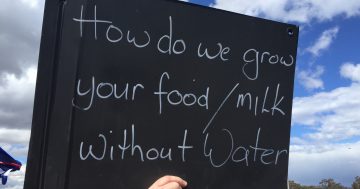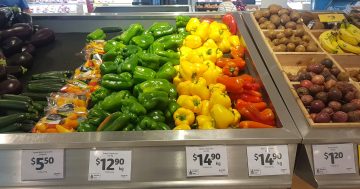
Raised on a dairy farm in the northern Victorian irrigation district, Rabobank senior analyst Michael Harvey has more than 15 years of experience as a professional analyst, researcher and adviser. Photo: Supplied.
Australian consumers will have no choice but to continue to meet rising cost-of-living pressures head-on, according to Rabobank’s latest Agribusiness monthly report.
Released last week, the latest quarterly Consumer Price Index (CPI) data has shown a continual rise in Australian food price inflation, with June 2022 quarter costs increasing 5.9 per cent compared with the same quarter last year.
Rabobank senior food retail analyst Michael Harvey said this was the highest year-on-year food price increase seen in the CPI since the September quarter 2011 (yearly food price inflation peaked at 6.4 per cent that year).
It follows a similar 4.3 per cent year-on-year food price increase in the March 2022 quarter.
Mr Harvey said there had been an increase across the grocery basket as well as in out-of-home food costs, with prices rising for dairy, meat, fruit and vegetables, and bread.
More food price rises are likely to come, and Rabobank’s 2022 July Agribusiness monthly report indicates the peak has not yet been reached.
“We expect the $AUD to rise further and reach 0.75/USD on a 12-month horizon,” the report says.
The report also indicates that the Reserve Bank of Australia will have to push more interest rate hikes through the remainder of this year.
“Consumers still have some headwinds to navigate,” Mr Harvey said.
The Australian Bureau of Statistics’ June 2022 quarter CPI data showed the main contributors to the rise in food prices included fruit and vegetables, which were up 7.3 per cent annually and 5.8 per cent on the previous quarter.
Prices for bread and cereal products were up 6.3 per cent annually and 3.1 per cent on the March quarter.
Meat and seafood costs were also up 6.3 per cent annually, but only 0.8 per cent on last quarter.
Dairy product prices were up 5.2 per cent annually and 1.3 per cent on last quarter.
Meals out and takeaway food costs were up 4.7 per cent annually. Compared with the March 2022 quarter, prices increased by 2.1 per cent (excluding the impact of Service NSW’s vouchers, and similar schemes in other parts of the country).
Mr Harvey said a number of factors were still exerting upward pressure on food prices.
“While the effect of the war in Ukraine was evident in high global agricultural commodity prices in the June quarter, an easing in these prices in July will take time to flow on to food markets internationally,” he said.
In addition, input cost pressures are still dominant across the food system, including labour, energy, freight and packaging.
Further supply disruptions locally, such as flooding and unfavourable weather in parts of Australia, are continuing to affect the availability of fresh produce.
Mr Harvey said while there had been some short-term freezes placed on food prices by some retailers, retail food prices were likely to continue to rise following recent price increases from food and beverage companies, with more potentially to come.
“In recent weeks, for example, we have seen some sizeable price increases in staple items, like private-label milk,” he said.
Signs are beginning to emerge of changed consumer behaviour in response to cost-of-living pressures, including reduced spending on discretionary items, and “trading down” (substituting more expensive for less expensive products and services they typically buy).
The main takeaway: Australian consumers need to brace for cost-of-living pressures to continue.
“And we expect there is more to come,” Mr Harvey said.
















